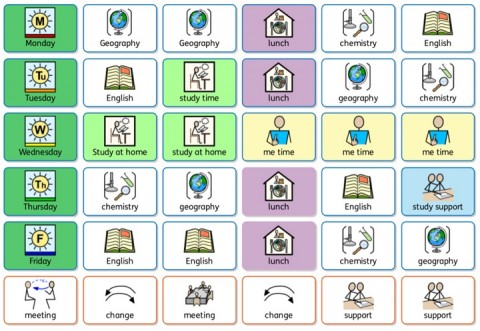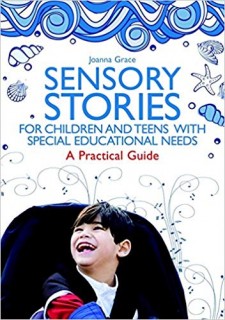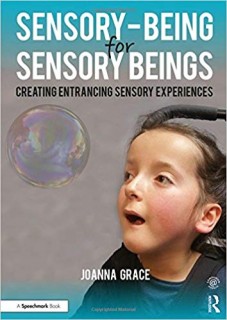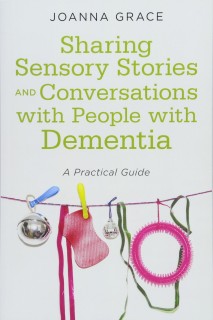I was invited to Cardiff and Vale College to do a workshop about supporting autistic students at 6th Form college. Cardiff and Vale college support students between the ages of 16-18 and beyond, including adult learners and in many different subjects, courses and situations. Obviously, all autistic students are different and telling them all I wanted to share in just 90 minutes was a struggle. So I put this information together wanted to also share this with you on our blog. I’ve organised it to tell you 5 key things I want you to know about autistic learners in FE colleges…
1. The first thing you need to know about autistic students is: They are all different.
That means although they may have the same diagnosis they do not have the same characteristics, strengths, interests, personality or difficulties.
You may have taught autistic students in the past and all the things that worked for them may not work at all for another autistic student. Autistic students can have other diagnosis/learning difficulties as well, eg. ADHD, OCD, PDA, Anxiety disorders, dyslexia, dyspraxia, sight/hearing impairment etc. Autistic girls can be very different from autistic boys, but as I said, they are all individuals. However, autistic girls are more likely to mask their autism (you think they are ‘okay’ and seem very sociable) but they are often struggling with crippling anxiety trying to ‘fit in’.
The strategies that make good support for autistic students are quite similar to the strategies that help them at any age, but they need to match the needs and age of the student so that they have some ownership of what helps them. Teachers can still make sure that their communication suits the student and there are some tips and hints in the handout attached to this post. Generally the adage “If they can’t learn the way you teach, then teach the way they learn” can be the best approach. Students I know don’t want cosseting but want to learn how to be independent and how to manage problems that arise. The support they get in college should be less intrusive than it was at school but that does mean we need to put strategies in place like visual timetables, class schedules, chunking and explaining work in ways they can manage. A key worker, who understands autism, that they check in with regularly can also be very important.
Here is an example of a visual timetable, made with a student suggesting how they wanted to organise their ‘study day’ when there were no lessons. She sat with her key worker as she came into college, discussed any changes and then she managed the rest of the day herself.
2. The second thing you need to know about autistic students is: They may take longer to grow up.
For some autistic young people it could take five to ten years longer to go through puberty. This means that when they are with you between the ages of 16-18, they may still be much younger in their outlook, interests and emotional development, even though physically they are the same as everyone else. This can lead to isolation, bullying, difficulties understanding social situations that they have not yet got the maturity to work out. There is vulnerability to exploitation, social and sexual. It can also affect their ability to understand some of the work and expectations on your course, but may not, .some autistic students can be academically much more mature than their peers because they have often been super-interested in the subject for many years before coming to college.
Self-identity is something that so many teenagers struggle with and as they come to college, the freedom to experiment with style (after having not wear school uniform all those years), identity and groups to belong to is part of their development at this age. Autistic students will be searching for the same sense of identity and belonging and may need extra support to do this (including giving them more time to process their experiences and ideas). Time, kindness and encouragement is important. It is also worth keeping in mind that possibly 30% of autistic young people identify as LGBTQ+ and could need support as they work this through in these college years.
3. The third thing you need to know about autistic students is: They may have a different perspective/ agenda/focus than you are expecting them to.
Autistic students can have a different perspective on the content and views of the work you are covering. They may contribute that view in the middle of your lesson, seemingly taking off at a tangent. But if you really listen to autistic students you can find that there is a lot that they can contribute and their depth of knowledge can be astounding. However, the difficulty comes when what they know and think about a topic clashes with what the curriculum (and exam board) wants them to regurgitate in an exam. It seems unfair to me, and I can certainly see why it seems unfair to students. As a tutor, it can be easy to find yourself becoming frustrated when you want to follow your lesson plan.
Another thing that tutors need to be aware of is that behaviour that seems to challenge you, usually has a very logical reason for autistic students. Autistic students can be intensely focussed on one thing when you want them to focus on something else. Some autistic students are often honest and say exactly what they think (with no social filter) or maybe very eager and anxious to say and do the right things, whilst not always judging it correctly. They may be anxious about EVERYTHING and be catastrophising about EVERYTHING. Anxiety may be their biggest driver, or it could be the need to have things predictable and controlled. Their memory may work quite differently, associative rather than time-based, or able to remember many details but have difficulty generalising. Understanding that their perspective is different from what you might assume is helpful so that you don’t assume. Instead, listen to the student and where possible map out what they think and know…then you can add your point of view or another perspective to the map so that they might see why you are giving them that perspective.
Here is an example of a mind map when a student was struggling to do homework. The green was written directly from what the student said, we then discussed solutions and help available together. I find this way of problem solving much more effective than just talking about it as it is a visual reminder, gives the student chance to ‘see’ the different perspectives together and feel that you really have listened to them and understood their point of view.
4. The forth thing you need to know about autistic students is: Sensory issues are often the most important driver of behaviours, mood and reactions.
Autistic students are likely to have sensory processing differences. Some will be more obvious than others and they may have found ways of managing their sensory needs at this age. However, it is more likely that the environment will trigger sensory difficulties for your student. They can be sensory seeking and/or avoiding. Noise, light, movements, distractions, smells, unexpected sensory challenges, changes, food, touch, can all lead to sensory stress, overload and meltdown or shutdown. Many autisitic students are highly stressed trying to cope with sensory overload and the effort needed to manage that alongside concentrating in class is huge and exhausting. “Stimming’ is a repetitive action that helps an autistic person feel grounded in the world around them, brings joy and helps them calm down if stressed. This is perfectly natural and okay. A meltdown or shutdown is when their brain is unable to process any more information and shuts down. For some this is obvious as they are displaying distressed behaviours, some may become aggressive, others may look as if they have ‘switched off’ and you may not even notice. Please be aware that talking to them at this point is like adding fuel to a fire. You are giving them verbal noise to try and process when they cannot. The key is to make sure they are safe (maybe needing to go to a safer area), use as little language as possible, and give them time to recover and ‘reboot’. These are far more distressing for the student than they will ever be for you.
Do find out from your student what adaptations you might make in your classroom. Letting them choose where they sit, wearing a baseball cap of headphones when working independently, turning some lights off so it isn’t so bright, letting them chew gum and even check whether the paper they are using is the best colour, texture and size for them to work with. There are many small things that can make a huge difference. Be aware, also of internal sensory stress for your student. They will still be going through puberty so menstruation, hormonal moods and hygiene may all have associated sensory issues that may affect a student’s learning or mood. Be sensitive, for them these sensory responses are much stronger than you could probably imagine and dismissing them or sanctioning a pupil for having sensory needs will not be fair.
The fifth thing you need to know about autistic students is: They have potential, ambitions and prospects.
Most autistic students are now doing subjects they are interested in and have chosen – although they may have one favoured. Students with ASC are the inventors, the creative thinkers, the IT innovators, the farmers, the business owners, the workers and managers, the psychologists, the comedians, the writers, the scientists, the ‘thinking-outside-the-box-ers’, the lecturers, the mums and dads of tomorrow. SO: Look out for The talents, The special interests, The details they notice that no-one else does, Their creativity and The perceptions that your Autistic students have and develop these.
It is a good view to have that autism is part of the human spectrum, a difference, not a deficit. There will be difficulties that need support, but not so that we limit the potential of our autistic students. You could help by:
Voluntary work– Consider giving autistic students supported opportunities to be involved in a project-based small group activity (such as a photography exhibition or charity event.)
Support preparation for Uni and for the world of work wherever possible.Involve parents and arrange supported visits and meetings with Uni learning support services.
Show them autistic role models.You tube is a great source of autistic young adults sharing their experiences and encouraging others. EG. Chris Bonello (http://autisticnotweird.com), Sara Harvey (Agony Autie on You tube).
If possible arrange a supported work placement.– practical experience, finding understanding employers and knowing the law, rights and adjustments they can ask for, will be very valuable.
https://www.princes-trust.org.uk/help-for-young-people/who-else/housing-health-wellbeing/wellbeing/disabilities– for more agencies that might help.









